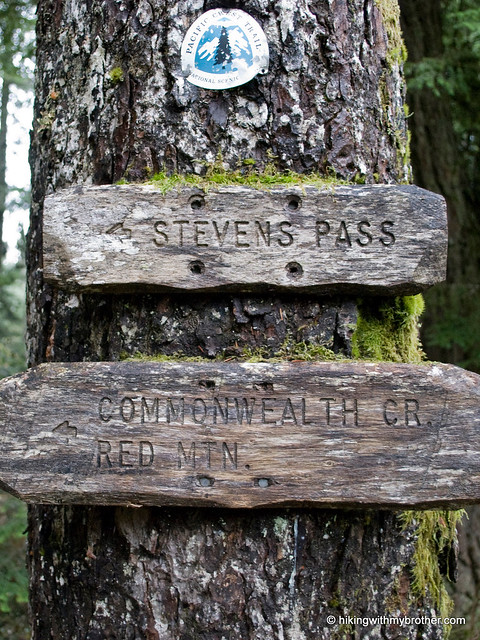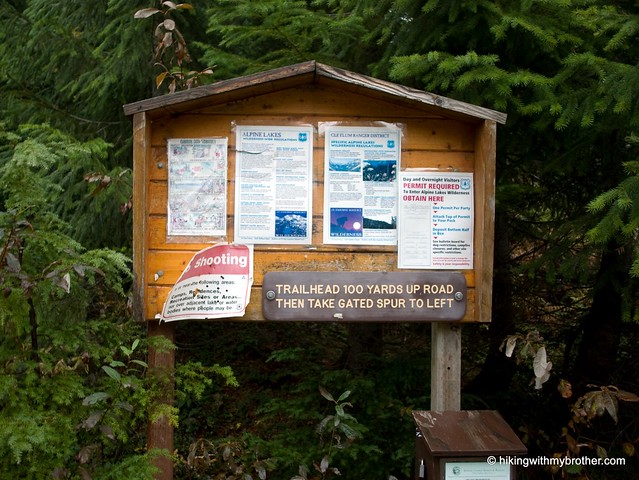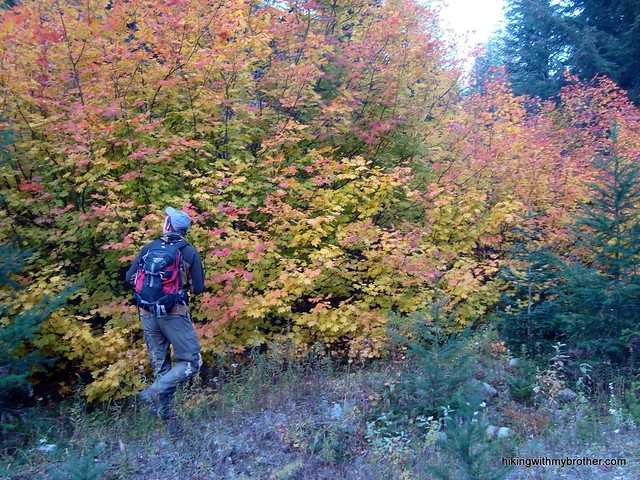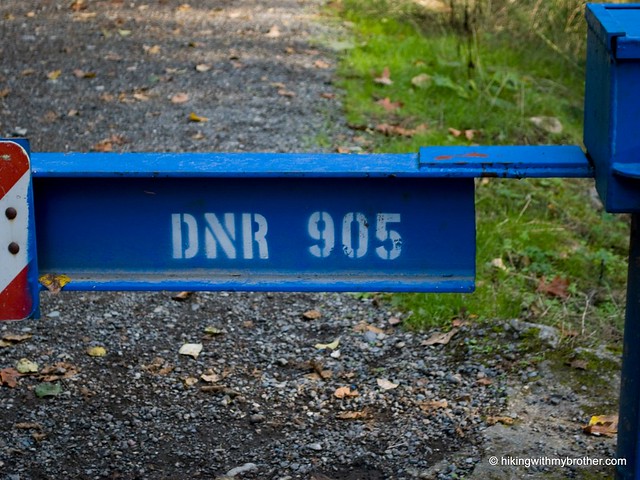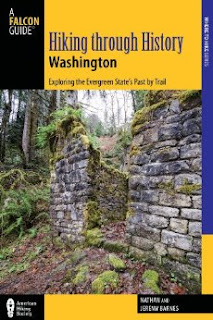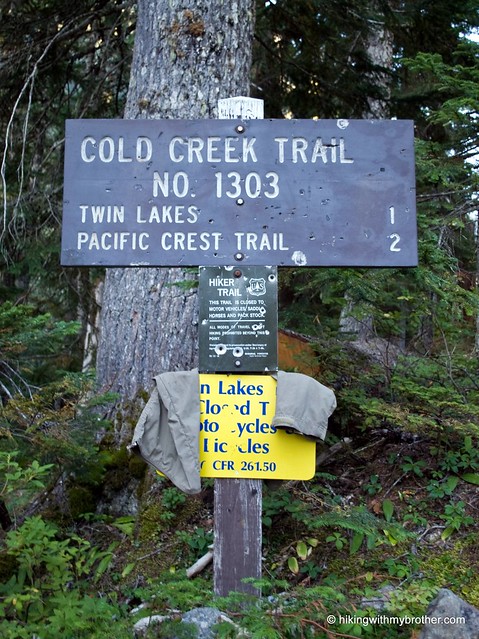Total Ascent: 2700ft
Highest Point: 5300ft
Total Distance: 7.2 miles
Location: N 47° 27.6300, W 121° 23.8560
Required Permit: Northwest Forest Pass
Difficulty: Hard
 We continued our race against the weather this week, hoping to complete a few more hikes in the Pass before the snows settle in. After a few weeks of hiking to lakes, we decided to head for Red Mountain and the Commonwealth Basin, intent on finding a scramble route to the top.
We continued our race against the weather this week, hoping to complete a few more hikes in the Pass before the snows settle in. After a few weeks of hiking to lakes, we decided to head for Red Mountain and the Commonwealth Basin, intent on finding a scramble route to the top.The Commonwealth Basin Trail has its origins in the mining claims common in this area. The trail was originally built by prospectors around 1890 to access claims within the valley. In 1928 Fred Cleator was put in charge of the US Forest region encompassing Oregon and Washington and immediately set about piecing together a contiguous trail through the region that would become eventually become the Cascade Crest Trail (CCT).
 The old Commonwealth Basin route served as part of the CCT until the late 1970s when, as part of the changes made during the construction of the Pacific Crest Trail (PCT), it was abandoned for the more efficient Kendall Katwalk route.
The old Commonwealth Basin route served as part of the CCT until the late 1970s when, as part of the changes made during the construction of the Pacific Crest Trail (PCT), it was abandoned for the more efficient Kendall Katwalk route.Most guidebooks suggest you follow the PCT to the Commonwealth Basin Trail (#1033) to get to Red Mountain, but we had already explored that portion of the Pacific Crest Trail on our way to Kendall Peak. Instead, we jumped at the chance take an alternative approach to our destination; a small, unmarked, but well-trodden trail branches off to your left just after you leave the trailhead. This is the old CCT route that is now officially “abandoned,” though it is clearly still well loved. There are some things to consider if you’re thinking of taking this route. On the plus side, the CCT route shaves off a mile or more of hiking; on the down side, the trail is on the rough side and while there is again a log bridge across Commonwealth Creek, it occasionally washes out.
Either way, you will be taken through mature stands of Silver Fir and hemlock, over
 streamlets and talus fields and past alluring waterfalls. The old Basin route saves much of its elevation gain for Red Mountain itself, while the PCT trail gains more elevation that you need, requiring you to relinquish what you’ve so recently gained. Whichever way you choose to go, you’ll eventually find yourself on the Commonwealth Basin Trail (#1033). This will bring you to the end of the basin and up the base of Red Mountain to Red Pass. After quite a number of switchbacks you’ll reach a level shoulder where short spur trails lead to Red Pond and up the crown of Red Mountain.
streamlets and talus fields and past alluring waterfalls. The old Basin route saves much of its elevation gain for Red Mountain itself, while the PCT trail gains more elevation that you need, requiring you to relinquish what you’ve so recently gained. Whichever way you choose to go, you’ll eventually find yourself on the Commonwealth Basin Trail (#1033). This will bring you to the end of the basin and up the base of Red Mountain to Red Pass. After quite a number of switchbacks you’ll reach a level shoulder where short spur trails lead to Red Pond and up the crown of Red Mountain.Snows had already made the exposed rock very slick, so we chose to forgo the scramble up to Red’s summit, and instead pushed on to Red Pass. The views here are spectacular. The mountain simply drops away, creating the feeling of being at the top of a massive amphitheater. The horn of Mt. Thompson steals the show, a fitting counterpoint to Mt. Rainier to the south. Commonwealth Basin spreads out to Alpental in the distance. From here Snoqualmie Mountain and Guye Peak seem less intimidating than they usually do, and rocky top of Lundin Peak is just ahead on the trail.
Red Mountain suddenly looks much more craggy and intimidating from this side, so we opted to continue on to East Lundin Peak. For years Lundin peak was called
 “Little Sister” a reference to it sharing a ridgeline with Snoqualmie Mountain. At some point it was renamed in honor of J.W. Lundin, who evidently did a great deal of good work for the US Forest Service. We were ill-equipped to get to the actual summit, so the steep but easily accessible East Peak was a perfect destination. Simply follow the trail along the ridge, ignoring the signs that tell you the trail is abandoned. Take the left fork heading upwards and stick to the rough trail to the top. The views don’t change much with the extra effort of pushing past the common stopping point of Red Pass, but it’s a cozy little spot to settle down and refuel.
“Little Sister” a reference to it sharing a ridgeline with Snoqualmie Mountain. At some point it was renamed in honor of J.W. Lundin, who evidently did a great deal of good work for the US Forest Service. We were ill-equipped to get to the actual summit, so the steep but easily accessible East Peak was a perfect destination. Simply follow the trail along the ridge, ignoring the signs that tell you the trail is abandoned. Take the left fork heading upwards and stick to the rough trail to the top. The views don’t change much with the extra effort of pushing past the common stopping point of Red Pass, but it’s a cozy little spot to settle down and refuel.Though probably better known as a snowshoe route, a trip through Commonwealth Basis is a great hike. The heights of Red Pass are attainable for just about anyone and are more than worth the exertion. We recommend going off the beaten path and using the older CCT route if you are up for the extra challenge. It gives you a much better feel for the Basin as a whole.
To get there, take I-90 to exit #52. Turn left under the freeway and take the first right. Follow the road to two large parking areas. The first is reserved for stock; -hikers should continue to the further parking lot and the trailhead. - Nathan
Print Google Directions >>
